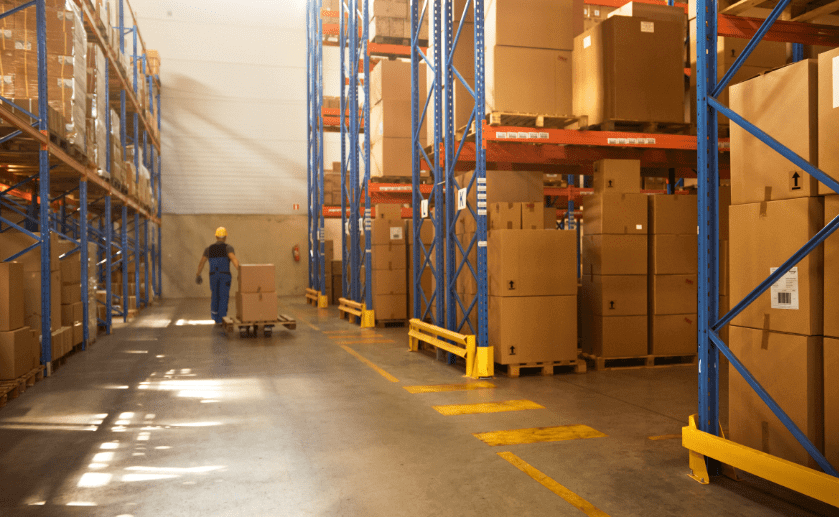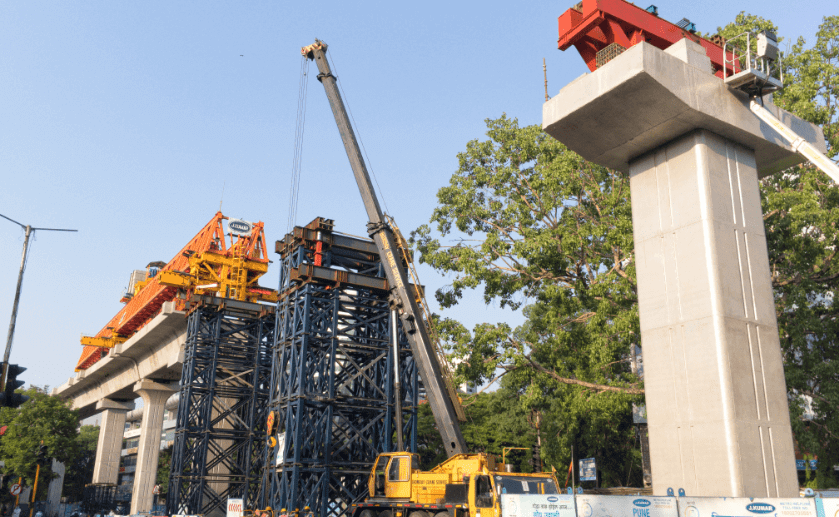Streamlining Procurement: The Power of P2P Automation

Streamlining Procurement: The Power of P2P Automation
As a Chief Procurement Officer, staying ahead with technology is crucial. P2P automation is a game-changer, breaking down old barriers in procurement. Gartner’s report shows a big move towards this, with the procure-to-pay market growing fast, expected to reach $13.4 billion by 2025. Automation can make your processes smoother, quicker, and more efficient. It’s all about making smart moves now to lead in the future.
This blog will explain how procure-to-pay software revitalizes your businesses, especially if you follow a traditional approach involving repetitive tasks.
The Evolution of P2P
The evolution of the Procure-to-Pay process has remained a contemplating point for CFOs and CPOs to increase efficiency and savings. The traditional manual procure-to-pay cycle, coupled with inefficiencies and poor spend visibility, contrasts starkly with the clarity and compliance of automation.
Moglix shows how a tire company could save money by changing how it does P2P. The company initially needed help with manual tasks and a need for unified suppliers. However, by automating P2P, they achieved a 3% cost decrease, a 95% OTIF rate, and a shorter PR-to-PO period of two days. This shows how efficient technology is, which is important for CFOs and CPOs who want to cut costs.
Navigating Challenges for Business Efficiency
A prominent EPC company’s MRO procurement process could have been more efficient due to a fragmented supplier base, inefficient multi-step processes, lack of standardized catalogs, and delayed order processing times. These challenges caused delivery delays, quality issues, and higher procurement prices. Moglix’s procurement workflow digitization helped solve these issues. Moglix implemented a streamlined procure-to-pay solution to improve procurement efficiency and transparency and reduce MRO procurement costs by 20%, proving that digital transformation can overcome operational challenges.
Final Words
When organizations upgrade their P2P method, they can cut costs, save time, get better visibility, and make mistakes less likely. Chief financial officers can learn more about how much money is being spent, which helps them control costs and negotiate better. Automation cuts down on manual chores by a large amount; A uniform system makes it easier to see what’s happening and make decisions. Automation in accounts payable lowers the chance of mistakes. In the end, P2P automation makes making requests easier, recording invoices, matching them, getting approval, and connecting them to ERP systems. This helps keep costs down, speeds up processing, and ensures correct financial reports.The procurement-to-pay process allows businesses to make wise decisions and enhance their financial operations. So, it is prudent for companies to proactively take consultations from experts like Moglix to learn more and resolve their supply chain issues.
Reference:
Red Sea Crisis Impact on Supply Chains: Key Info for CPOs

Red Sea Crisis Impact on Supply Chains: Key Info for CPOs
As stated by an official, the Red Sea crisis [1], sparked by Houthi rebels in November 2023, has severely disrupted global supply chains, particularly impacting Asia-Europe trade routes via the Suez Canal. According to UNCTAD, there’s been a 28% [2] decrease in daily canal transits in early January 2024, forcing reroutes that add significant costs and delays.
According to a Geopolitical Monitory research, this conflict skyrocketed shipping costs by 173% [3]. This alarming situation is a critical wake-up call for Chief Procurement Officers globally, emphasizing the urgent need for robust risk management and contingency planning in supply chain operations.
To mitigate global shocks, Chief Procurement Officers must focus on Strong supply chain management, risk analysis, planned route diversification, and quick response to enhance overall supply chain resilience.
The wake-up call
The crisis in the Red Sea is changing how we handle world trade and supply lines in big ways. Shipping charges amplify when routes have to be changed because of it. There are a lot of problems in fields that depend on buying and selling things across borders, like energy, technology, and car manufacturing. It’s important to have good supply chain plans to keep things going easily and drop risks. The main goals of these plans should be to get things from different places, better track of stock, and use various transport methods.
It has had a huge effect on the world economy. As per a Geopolitical Monitor study, the cost of shipping a 40-foot container from Asia to Northern Europe has risen by $4,000 [4]. Vessel insurance prices also increased: for a $100 million vessel, the cost increased from 0.1-0.2% to 0.5%, $300,000 to $400,000 [4]. This cost increase is putting inflationary strains on the region’s fragile economic recovery.
Especially in light of the Red Sea situation, Chief Procurement Officers (CPOs) need to understand how important transparency in the supply chain is. According to a study by Harvard Business Research, 90% [5] of leaders think being more open encourages employees to make more informed choices. Supply chain apps that use digital tools like blockchain and AI can better track and manage risks, which makes things simpler. Buyers and sellers need to speak clearly and regularly so that information can be shared and decisions can be made quickly. This way of doing things is important for improving businesses and dealing with tough global trade problems.
Another important lesson is how to outsource in the supply chain. This is what more than 80% of supply chain workers do when they want to raise the cost of outsourcing. Utilizing the expertise of outside delivery companies enables businesses to concentrate on their core operations.
Streamlining Complexity
A case study shows how important it is to have strong supply chain plans and clear communication between all parties involved: A tire manufacturer with seven plants struggles with supply chain issues, such as keeping track of more than 8,000 line items and 600 sources, which slows things down and wastes time. Even though these things went wrong, they could save 3% on their overall costs.
Final words
Finally, the Red Sea situation emphasizes the need for Chief Procurement Officers to engage in supply chain digital transformation. This transformation is critical for successful supply chain management, allowing organizations to negotiate complex global difficulties while increasing resilience. Adopting digital solutions in supply chain management services is critical for risk mitigation and operational efficiency. Explore professional insights and modernize your supply chain with Moglix. Delve into disruptive tactics and find comprehensive solutions to enhance your operations.Explore professional insights and modernize your supply chain by delving into disruptive tactics and discovering comprehensive solutions. For more information, turn to Moglix.
References:
- https://economictimes.indiatimes.com/red-sea-crisis-affect-on-indias-trade/articleshow/107402330.cms
- https://www.msn.com/en-in/news/India/red-sea-crisis-affect-on-indias-trade/ar-BB1hKnOA
- https://www.geopoliticalmonitor.com/red-sea-crisis-exposes-a-weak-point-of-global-maritime-trade/
- https://www.geopoliticalmonitor.com/red-sea-crisis-exposes-a-weak-point-of-global-maritime-trade/
- https://www.basware.com/en/resources/harvard-business-review-analytic-services-using-transparency-to-enhance-reputation-and-manage-business-risk
The Importance of Proper Foot Protection: A Guide to Safety Footwear

The Importance of Proper Foot Protection: A Guide to Safety Footwear
The Directorate General Factory Advice Service & Labour Institutes (DGFASLI) says that about 4,000 [1] injuries, including foot injuries, happen yearly, causing people to miss days at work. That’s why wearing the right shoes to protect your feet is important, just like other industrial safety equipment you use at work. Let’s learn about workplace dangers that can hurt your feet and the types of safety shoes you can buy.
Different Types of Workplace Hazards Involving Foot Injuries
Falling and Flying Objects
Sometimes, workers work in a dynamic work environment. It involves big vehicles, heights, or heavy machines. Here, shielding the feet against falling and flying objects becomes imperative.
Defense against punctures
The ground of a construction site is full of sharp objects. Regular soft-soled shoes may not be able to provide substantial protection. This might lead to punctures and foot injuries.
Cutting hazards
Industries into cutting or drilling operations involve machine parts with sharp turns or pointy edges, such as chainsaws and grinder cutters. Using them without protection gears might expose workers to significant foot and leg injuries.
Electrical Hazards
When live electric wire comes in contact with the ground without earthing protection, the working personnel will feel the electric shock without non-conductive footwear. Such shoes are also important to save workers from static electricity.
Slips, Trips, and Falls
More than 40% [2] of injuries at the workplace are due to slips, trips, and falls, out of which 16% of accidents involve falls on the ground level. It can happen due to poor lighting, trailing cables, uneven flooring, or cluttered walkways. Proper footwear with adequate traction to prevent foot and other injuries.
Burn and Fire Hazards
According to reports from OSHA, almost 200 [3] workplaces catch fire daily. Normal fire dangers, chemical spills, or hot, melted metals can cause these fires. Workers must wear strong, protective shoes in these kinds of workplaces to keep them safe.
Types of Safety Footwear
Industrial Safety Shoes
These are anti-slip, steel-reinforced shoes to offer protection in extreme working conditions such as construction, logistics, electronics, automobile chemicals, etc.
Work Boots
Work boots cover half calves to offer protection from electric shock, heat, fuel/oil spills, and sharp objects at the workplace.
Steel Toe Shoes
The toe box of such shoes is made of heavy-duty steel to offer maximum protection against puncture, compression, and impact in all weather conditions.
Electrical Safety Shoes
Electric safety shoes are made of non-conducting leather and non-metallic fiber toes with PU soles. They can resist high electric shocks of 11kv for up to one minute.
Leather Safety Shoes
Usually made of carbon steel, these shoes offer protection from impacts and can resist heat up to 300°C for one minute.
High Ankle Safety Shoes
These shoes come with durable protective material coupled with soft cushioning at the top to aid comfort and safety.
Waterproof Safety Shoes
Workers working under water-logged conditions need shoes to protect their feet from harsh chemical liquids, shocks, and chemicals.
Welding Shoes
These are breathable, anti-skid shoes with heat and burn-resistant features well suited for electric welding, leg welding, and blacksmithing spats.
End Thoughts
Choosing the right safety shoes requires identifying the hazard type and the ideal material that can offer the best protection. However, an expert consultation should not be an option to ensure maximum workplace safety.
The safety of your workers is more important than anything else. Ensure it by adopting the right safety equipment and safety rules in industry. Visit our website to learn more.
Reference:
Butterfly Valve 101: Here’s all you need to know

Butterfly Valve 101: Here’s all you need to know
According to the Butterfly Valve Market study, the worldwide market for butterfly valves is expected to grow to about 6860.09 million dollars [1] by 2028. Butterfly valves are liked because they control the flow of liquids or gases well. They don’t cause much pressure to drop and can handle much flow without much care, saving money. But these valves come in different sizes. You need to pick the right size and shape of a butterfly valve for what you need it for. You must also check it regularly to ensure it works safely and well. Let’s learn more about butterfly valves and get some tips from experts on keeping them working great.
Butterfly Valve Construction and Working Principle
Butterfly valves work by turning a quarter of a circle. They are really useful for either stopping or controlling the flow of liquids. Such BF valves comprise two offsets of the disc from the valve body’s center. Some major butterfly valve components are:
- Valve body
- Disc
- Seat
- Stem
- Seals
Butterfly Valve actuation
Here are four different ways to control the opening and closing of valve speed.
Manual: simple and inexpensive valve operations using a handwheel, crank, or lever to control the stem and the disc
Electric: four 20 mA control signals are used via a bi-directional motor for process control in non-critical and light-duty modulation activities.
Pneumatic: the valve is operated through a piston within a closed cylinder. These are useful for controlling highly flammable liquids like petrochemicals, Oil, and Gas.
Hydraulic: These actuators use pressurized oil instead of air. The aim is to achieve high control during valve operations.
Diverse usages of Butterfly Valve
Butterfly valves are used in various industries, such as:
- Fluid control in water supply, collection, distribution, and pumping stations
- Fluid control in the pharmaceutical, chemical, and food industry
- To control aggressive media involved in refineries at extreme temperatures and pressure
- Used for jack-up rigs, ballast systems, and firefighting apparatus in the ship-building
- Regulating and isolating the flow in power generation units
- Preventing backflow in some situations
Size considerations
Butterfly valves come in lots of different sizes. It can be a few inches or several feet. So, choosing the right size is important for the safe operation. Butterfly valves that follow ANSI, API, and ISO standards are good choices. They are reliable and high-quality, meeting safety, performance, and lasting use standards.
Picking the valve’s size depends on what you need it for. For example, the common sizes for big pipes in places like chemical plants or water treatment centers range from 2 inches to 96 inches. So, looking at the specifications to choose the right type, size, and valve dimensions is important.
Practical Usage Tips for Butterfly Valve
- Ensure the valve is correctly installed
- The flow direction should align with the arrow on the valve body.
- Perform periodic maintenance to check for wear and tear on the valve sealings.
- Operate the valve within the specified pressure and temperature limits.
- Do not tighten the valve too much as it may damage the seals and reduce its lasting.
- When used in a dusty environment or with corrosive materials, periodically clean the valve to ensure smooth operation.
Guarantee the safety and efficiency of your industry with premium butterfly valves from Moglix Solutions! To learn more, contact Moglix Business today!
Reference:
https://www.linkedin.com/pulse/butterfly-valve-market-size-2023-2030
Digital Transformation in Procurement: Navigating the Current Trends and Future Directions

Digital Transformation in Procurement: Navigating the Current Trends and Future Directions
Recently, the business area that deals with buying things (procurement) has benefited from new technologies. According to a Zipido report 2023, almost 83% [1] of chief procurement officers believe it’s important. They feel it’s time to be super efficient, good at handling risks, and make smart choices to meet ever-changing customer demands. In this regard, in this article, let’s understand the popular trends and future of digital procurement transformation. We will learn the role of AI in making decisions, blockchain in integration, and other such innovative technologies. Let’s see how they help reshape procurement with ease.
Three Focus Areas in Digital Procurement Transformation
Use AI for Automation
As per the Harvard research, big companies like Walmart, Tyson Foods, and Koch Industries use a special computer program called AI (Artificial Intelligence) to help them handle their supply chain [2]. They use AI to automate a lot of tasks. It includes buying new items, searching and identifying new suppliers to work with, automatic negotiations, etc. This saves them a lot of time.
Instead of the old way of keeping track of what they have in their stores, these companies now use a new system that orders more stuff by itself when needed. This helps them ensure they only have a little or little of something. AI can also handle paying for things automatically when they are delivered, which saves time and means fewer people are needed to do these jobs.
Use Blockchain to Improve Supply Chain Visibility
The use of Blockchain in supply chain transformation is also increasing. According to the Industry Trends, Value, Analysis & Forecast Report by Zion Market Research, it may attain a growth of 51.3% [3] between 2022 and 2028. The technology offers a secure and tamper-proof platform to shield sensitive information. Some leading supply chain startups that use Blockchain like this are Yojee, Te-FooD, T-Mining, and SUKU.
This app lets everyone see what’s happening clearly. For example, businesses can write down their deals at different steps in their supply chain in a special kind of record book called a Blockchain ledger. They can also use AI (Artificial Intelligence) and IoT (Internet of Things). Then, the Blockchain can spot problems in getting supplies or sending products to the supply chain. This helps companies act quickly to reduce these risks in advance.
Utilize Big Data for Spend Analysis
Nearly 97% [4] of companies worldwide are using big data to get useful business information. The technology makes use of your expenditure information to offer useful advice. You can learn to easily predict profits, avoid mistakes, and identify new market opportunities. Many companies are already doing this to find areas of improvement in procurement. This saves companies from tiresome manual processes and paper-based workflows.
End Thoughts
Digital procurement is already a reality. Shifting the focus to supply chain digital transformation is improving the overall procurement efficiency. It also helps cut down manual intervention and save costs in procurement. Adhering to best practices and trends in e-procurement can help companies reap more benefits of digitization. Read our case study on how Moglix enabled automotive OEMs to unlock 2% cost savings in indirect procurement through supplier consolidation. For more information on procurement transformation, contact Moglix Business today!
How Procurement Digitization Enhances Strategic Decision-Making

How Procurement Digitization Enhances Strategic Decision-Making
According to a McKinsey report, nearly 81% [1] of company heads believe the old way of handling essential company purchases needs to be updated. As per a PWC survey, even 86% [2] of the top leaders agree technology is the key to bringing the supply chain to order. In this regard, procurement digitization is the most important step in having a supply chain that is connected, smart, and works well.
4 Benefits of Digital Procurement
Automated Workflows
About 69% [3] of boring tasks that have to do with managing things will be done by computers automatically. Technology has changed how businesses buy stuff. It makes jobs that used to be done by hand happen automatically and lets people see how money is being spent immediately. Using software to buy things is also trending. This software works well with big computer systems like SAP and Oracle to pull out information about orders, bills, and payments. You can eliminate the need to enter data by hand to save time. It also makes things more accurate and costs less to process.
Access to Real-time Analytics
Around 60% [4] of companies worldwide use instant data analysis to help make business choices. They have special dashboards powered by business intelligence tools that show important information about buying things, like how much money is being managed, how much is saved, how well the process works, and how good the suppliers are. Strong analysis of past purchases also helps you make decisions based on data. You can quickly decide where to get things and contracts for the best value. These days, businesses also use machine learning (a smart computer program) to analyze. These machine-learning programs can spot early signs of unusual spending and risks. This way, you can avoid big mistakes easily.
Streamlined Procurement
A report from Deloitte says that nearly 83% [5] of the people in charge of buying things for companies are using digital ways to make buying easier. E-procurement platforms, which are online systems for buying, bring everything together in one place. They make buying simpler and the same across different parts of the business, and they use special steps to ensure everything is done right and follows the rules. Suppliers and sellers connect to these systems for an easy way to handle orders, bills, and payments all on one platform.
Improved Cycle Time
About 83% [6] of the leaders who handle technology in companies use automation to speed up their processes. This helps in getting rid of paper records to make things faster. New technologies have also changed the way companies buy things. It is now adding values. Companies are also saving money by spending only as per demand using data from technology.
Digitizing the Procurement Function
Digital Category and Service Procurement
Think about seeing and controlling how money is spent in your business using a computer or online tools. This would help you make smart decisions quickly. Digital buying, especially for software, computers, and new types of services, focuses on these new areas. For example, using a safe computer program or app, you can keep digital records of all your buying activities and deals. You can use software like Procurify, Coupa, and SAP Ariba to help you with this.
Innovative Procurement Data Utilization
Almost 80% [7] of companies think their data could be organized better. That’s why big data analytics (analyzing lots of data), predictive modeling (predicting future trends), and AI (Artificial Intelligence) are becoming popular. They help companies make really smart decisions based on lots of data. When companies look closely at a huge amount of data about how much they spend, they get many useful ideas. They can accurately predict future prices, risks in getting supplies, and new market trends. That’s why companies are moving towards using predictive intelligence, which means guessing what will happen in the future based on data. They do this to make plans to avoid problems easily and in advance.
End Thoughts
Procurement digitization can offer significant cost and time benefits. However, companies should be willing to transparently upgrade their digital skills and talents to adopt this new digital culture. At Moglix Solutions, we provide innovative solutions for procurement digitization. Discover how we helped India’s leading tractor manufacturer reimagine the user journey with a seamless digital procurement experience. As a result, the manufacturer saved 85% of staff hours on procurement. To learn more about how we help with the procurement process for procurement transformation, contact Moglix Business today!
2024 Fabrication Outlook for Project Heads of EPC Project Developers in India

2024 Fabrication Outlook for Project Heads of EPC Project Developers in India
The year 2024 will present a series of dynamic and transformative growth opportunities for EPC project developers in India. The center is fusing Rs 143 lakh crore into modernized railway infra, clean energy, power, and defense sectors. Thus, EPC project heads should prepare to be a part of this sustainable development for reshaping India’s industrial future. In this regard, let’s look at some key events that EPC project heads should consider as their golden ticket to big growth and transformation.
Events in 2024 That Project Heads of EPC Project Developers Should Watch Out For
Four essential 2024 fabrication outlook agendas for EPC project heads:
Railway Infrastructure Spending
India plans a massive upgrade of its railway infrastructure through significant investments and technology improvements. The proposed purchase of 8 high-speed bullet trains promises enhanced connectivity and reduced travel times. Additionally, the redevelopment of over 1,300 stations aims to improve passenger experience while enabling infrastructure growth. Along the same line, the government has ambitious plans to invest in 400 Vande Bharat trains and 3000 new passenger trains in 5 years to demonstrate a commitment to expanding and upgrading the railway network. These projects offer EPC firms ample contracts and tenders for civil construction, signaling, electrification, and rolling stock.
Clean Energy for Mobility
India’s clean mobility sector holds promising growth potential. The goal to command 30% of the global clean mobility market by 2030 reflects an aggressive sustainable transportation push. This entails ₹30 lakh crore investments, with ₹8 lakh crore for green hydrogen development to revolutionize car fuels in years to come. This could be a great opportunity for EPC heads to prepare for addressing concerned manufacturing, charging infrastructure, and energy storage solutions.
Power and Energy
India’s power sector will likely undergo rapid expansion. With power consumption projected to reach 4 trillion units by 2030, growing at 13% CAGR, the sector’s total addressable market is estimated at ₹24 lakh crore. This trajectory offers renewable energy, grid modernization, and energy efficiency prospects.
Defense Sector Spending
India’s defense sector, already the 4th highest global spender, offers emerging EPC potential. Exports to 84 countries and 20% CAGR in defense exports showcase robust expansion. The sector eyes ₹1.75 lakh crore turnover by 2025, presenting infrastructure, manufacturing and maintenance opportunities.
Fabrication Solutions that Project Heads of EPC Project Developers Should Adopt in 2024
Invest in Plant Capacity Expansion and Geographical Diversification
How can your company handle big projects without capacity and service upgrades? It’s crucial. Expanding plant capacity and upgrading machinery and technology is crucial for meeting rising project demand and complexity. Geographical diversification reduces logistics challenges and costs while positioning firms closer to project sites and raw materials, enabling faster, more efficient execution.
Control OPEX Costs & Outsource Auxiliary Works
Almost 27% of organizations outsource to reduce operational costs. Outsourcing non-core activities like painting, fabrication, and welding to specialized subcontractors can significantly reduce operational expenditures. This allows focusing on core competencies while leveraging efficiencies of scale and expertise.
Develop Captive Suppliers with JIT and VMI Capabilities
Imagine the peace of eliminating inventory while accessing materials on-demand from vendors with fast delivery. Establishing captive suppliers with Just-In-Time and Vendor Managed Inventory capabilities can do the same to streamline supply chains. This approach reduces inventory costs and ensures timely material availability, minimizing delays and cost overruns.
Onboard Suppliers onto the Digital Platform
Nearly 83% of CPOs consider digitizing the procurement for enhanced efficiency. Integrating suppliers into a digital project management platform enhances communication, transparency, and real-time tracking of material and progress with ease.
Explore Early Supplier Payment for Bottlenecks
Around 71% of companies feel raw material costs are one of the major supply chain threats. Therefore, EPC firms should consider early payment for bottleneck items to ensure all essential construction materials are available to handle dynamic project requirements and to build strong relationships with suppliers.
Explore Moglix Business custom fabrication solutions here.
2024 Procurement Outlook for CEOs of Infrastructure Project Developers in India

2024 Procurement Outlook for CEOs of Infrastructure Project Developers in India
The 2024 procurement outlook presents a mixed bag of challenges and opportunities for CEOs of infrastructure project developers in India. While the current economic downturn has instilled a sense of caution, 2024 holds promise. India is planning to invest nearly Rs 143 lakh crore in infrastructure over seven years through 2030 – a substantial increase from the Rs 67 lakh crore in the preceding period. That said, CEOs should focus on four major key areas to optimize their supply chains and to drive growth and innovation in their projects in 2024.
4 Sectors CEOs of Infrastructure Project Developers in India Should Watch Out in 2024
Roads and Highways
The Union Budget 2023-24 has allocated an enhanced outlay of ₹1.62 lakh crore to the National Highways Authority of India (NHAI) as part of MoRTH’s capital expenditure plan for the current fiscal year. The budget also marked a notable hike in capital expenditure of NHAI projects with an additional allocation of INR 70,000 crores. Looking at this level of commitment, CEOs must expect even greater momentum in 2024 from the Government of India in the upcoming union budget. As the government is planning for faster completion of projects in 2024, you can expect faster approval of procurement to facilitate smoother transportation and logistics across the country.
Power T&D
India’s transmission and distribution (T&D) segment is also trying to achieve notable progress in grid physical structure expansion and technological advancements. Under the Green Energy Corridors (GECs) program initiated in 2015, India is aspiring to lay out 9700 KM of interstate T&D lines with 22,600 MVA of substation capacity by 2024. Nearly INR 500 crores are anticipated to be invested in T&D lines for 22,000 MVA capacity to upgrade the existing power transmission network.
Renewable Energy Generation
Green energy is one of the major areas of focus under the Amrit Kaal scheme for the next 25 years. A whooping ₹35,000 crore has been sanctioned for “priority capital investment” to push green hydrogen promotion through building renewable energy projects of 4,000 MW hours capacity. The budget for solar power has been raised to ₹4,970 crore, up from ₹3,469, to build solar grids worth 10,000 MW capacity. Additionally,₹19500 crores program to boost the National Green Hydrogen Mission is also on the cards. The aim is to increase the total renewable energy capacity by four times by 2030.
Ports
Ports carry 90% of international trade by volume. That’s why the GOI has set an ambitious target of meeting a $1000 billion export target for FY 2025-2026. 225 projects of ₹2.17 lakh of revenue capex are already in the implementation stage, and there will be a greater focus on single window clearance under PM Gati Shakti in 2024. For CEOs of infrastructure project developers, this represents a massive opportunity for bidding and involvement in diverse projects to generate revenue and develop strategic partnerships.
How CEOs of Infrastructure Project Developers Should Gear Up Their Supply Chain in 2024?
In 2024, CEOs of Infrastructure Project Developers should focus on the agile completion of projects in the PM Gati Shakti‘s Harmonized Master List (HML) by establishing a working capital green channel for swift OPEX purchases. Prioritizing the upgrade of legacy IT assets, like ERP, is crucial for digital procurement transformation. Additionally, adopting a site aggregation model based on vendor consolidation for construction material procurement will enhance efficiency. Implementing an end-to-end analytics dashboard for weekly progress reviews of HML projects will further streamline operations and ensure timely project completion. Visit Moglix’s infrastructure management solutions to learn more about procurement of TMT steel bar, crash barriers, bitumen and more.
Top 5 Railway Stations in India Which Are Design Engineering Marvels

Top 5 Railway Stations in India Which Are Design Engineering Marvels
Have you ever wondered how design engineering transforms travel experiences in railways? Indeed, we do not need to look anywhere other than India’s top railway stations to find the answer. But do you know what design innovations have gone into their engineering to make them highly functional for the public? Let’s find out by analyzing the engineering prowess of 5 top railway stations in India.
1. Castle Rock Railway Station
This small railway station serves Castle Rock city in Karnataka. Surprisingly, it was the only railway station where a passport was checked for onward journey. This standard (on-ground) station, because of its close proximity to Dudhsagar Falls, has been majorly designed using corrosion resistant steel. The aim is to protect the infrastructure from moist air known for causing damage through corrosion. The same material has been used for trough floor, pillars, sidewalls, as well as roof of the station. Also, the internal surface of storage water tanks and pipes has been painted with a bituminous anti-corrosive solution.
2. Ghum Railway Station
Ghum railway station is the highest railway station in the world (7,407 ft) from Darjeeling. Serving at such a staggering height has become possible with the use of high-accuracy railway casting. They are made up of carbon steel and low alloy steel to withstand extreme weather conditions and geological challenges. Also, highly praise-worthy engineering goes into striking design accuracy to prevent any potential derailment or structural failures. Here precision of railway casting isn’t just a matter of quality but a cornerstone of safety and functionality.
3. Howrah Railway Station
Howrah railway station (Kolkata) is India’s 2nd oldest and busiest railway station, with 23 platforms facilitating 974 trains and 3 million people daily. All platforms run parallel to each other and are well-organized. Surprisingly, this is the only railway station with a road between 23 platforms to help people reach either end of the platforms with ease. Furthermore, the use of high-precision casting contributes to the longevity of the infrastructure.
4. CST Railway Station
The Chhatrapati Shivaji Maharaj Terminus (CST) in Mumbai, formerly known as Victoria Terminus, is known due to its exemplary design engineering. This historic station is a brilliant example of Victorian Gothic Revival architecture blended with functional ingenuity. An intricate network of platforms, tracks, and signaling systems is engineered to optimize the efficiency and safety of the CST railway station. Additionally, the station’s layout is masterfully planned to accommodate retail spaces, waiting areas, and administrative offices without compromising passenger movement.
5. Charbagh Railway Station
Charbagh Railway Station in Lucknow combines the design engineering of Mughal and Rajput architectural styles. Interestingly, the aerial view of the station appears like a chessboard. All platforms are spacious, with well-planned tracks and advanced signaling systems to facilitate smooth train operations. This also ensures the safety of passengers. Its symmetrical layout of platforms, waiting rooms, and ticket counters optimizes passenger flow and minimizes congestion.
If you’re curious about utilizing trending design engineering solutions for your next project, let Moglix be your ideal guide. Whether it’s about the best use of corrosion resistance steel for your construction or blueprinting fabrication ideas for standardized parts, visit Moglix’s fabrication solutions to get your inspiration.
Top Forest Reserves and Wildlife Sanctuaries with Infrastructure for the Best Travel Experience

Top Forest Reserves and Wildlife Sanctuaries with Infrastructure for the Best Travel Experience
Have you ever wondered what makes forest reserves & wildlife sanctuaries easy to access for travelers? Well, it is the infrastructure that shapes memorable travel experiences. In this regard, let’s review India’s top forest reserves & wildlife sanctuaries, which promise the best travel experience for their robust infrastructure. Let’s analyze what advanced infrastructure helps improve overall travel quality, accessibility, and comfort for their visitors.
Forest Reserves & Wildlife Sanctuaries in Northern India with the Best Infrastructure
Jim Corbett National Park
Jim Corbett National Park offers jeep safaris to see tigers, elephants, exotic birds, river rafting in the Kosi River, and wildlife insights at the Corbett Museum.
Alluring infrastructure for travellers:
- Forest rest houses at Bijrani
- Luxury resorts at Dhikala
- Well-maintained roads
- Thrilling safari rides
Dudhwa National Park
Dudhwa National Park features diverse wildlife like tigers, rhinos and leopards, birdwatching, elephant safaris, nature walks, and discovery of Tharu tribal culture.
Alluring infrastructure for travellers:
- Food courts at Dudhwa Tourist Complex
- Jeep Safari, Elephant Safari & Canter Safari
- Gov. maintained forest rest houses
- Helicopter service
Dachigam National Park
Dachigam National Park is famous for the endangered Hangul deer and beautiful landscapes, with opportunities for guided treks, spotting Himalayan birds and mammals, and experiencing serene Marsar Lake.
Alluring infrastructure for travellers:
- Two rest houses in lower Dachigam
- Well-connected roads to Srinagar
- Regular jeep services
What’s Unique About the Infrastructure Connecting These Places?
Pantnagar Airport and NH 7, which connect Delhi to Corbett National Park, provide crucial accessibility. Pantnagar is the nearest air link to the region, while NH 7 ensures smooth drives from Delhi to Jim Corbett and branches to other parks. This robust network enables convenient, fast travel, attracting global nature enthusiasts.
Forest Reserves & Wildlife Sanctuaries in Southern India with the Best Infrastructure
Aanamalai Tiger Reserve
Aanamalai Tiger Reserve features majestic tigers, rich biodiversity, bird watching, picturesque viewpoints, and thrilling jungle safaris.
Alluring infrastructure for travellers:
- 50 furnished and well-maintained rooms
- Jungle safari through well-connected roads
- Shopping centers at Topslip
Bandipur National Park
Bandipur National Park is known for tigers and elephants, with jeep safaris, bird watching, wildlife photography, and serene deciduous forests and hills.
Alluring infrastructure for travellers:
- Jeep and bus safari
- Intrepretation centers
- Lodges, resorts, and guesthouses
Periyar National Park
Periyar National Park is famous for elephant herds and lake cruises, with wildlife sightings, spice garden tours, and nature walks amid lush greenery.
Alluring infrastructure for travellers:
- Day and night safari options
- Boating tour through rivers
- Periyar Lake Cruise
- Jungle Camping
What’s Unique About the Infrastructure Connecting These Places?
Let’s see what commuting infrastructure offers easy access to explore the rich wildlife of these southern natural sanctuaries. NH 766 links Kozhikode to Kollegal and passes through Bandipur National Park. It serves as a vital connectivity route to these parks. This highway offers seamless travel and scenic drives through diverse terrains to boost tourism.
Forest Reserves & Wildlife Sanctuaries in Eastern & Northeastern India with the Best Infrastructure
Sundarban National Park
Sundarban National Park features the world’s largest mangrove forest and Royal Bengal tigers, with boat safaris to spot diverse wildlife and experience unique mangrove habitats.
Alluring infrastructure for travellers:
- Well-guarded Tiger Camp
- Night safari
- Watch towers at Sudhanyakali, Dobanki and Burirdabri
Gorumara National Park
Gorumara National Park is known for Indian rhinos, with elephant safaris, jeep rides, bird watching, lush forests, grasslands and rich cultural experiences of local tribes.
Alluring infrastructure for travellers:
- Government-run forest rest houses
- Panjhora Wilderness Camp
- Dhupjhora Elephant Camp
- Rhino Observation Pointf
Kaziranaga National Park
Kaziranga National Park is famous for one-horned rhinos, offering elephant and jeep safaris, river cruises to see diverse wildlife amid breathtaking landscapes.
Alluring infrastructure for travellers:
- Government-aided accommodations
- Jeep and Elephant safaris
- Easy transportation through connected rods
What’s Unique About the Infrastructure Connecting These Places?
Let’s look at the infrastructure elements. Interestingly, SH 3 uses corrosion-resistant steel bridges for efficient and durable connectivity to Sundarban National Park’s humid, saline environment. Similarly, NH 717 offers smooth access to Gorumara National Park. For Kaziranga, NH 37, known for its best quality bitumen and remembered for the cycling event in the 2016 Asian Games, provides exceptional connectivity with quality construction, promoting accessibility, eco-travel and conservation.
Conclusion
India’s top forest reserves & wildlife sanctuaries stand out not only for their natural beauty but also for their good infrastructure. Efficient construction raw material procurement and well-planned infrastructure supply chain solutions have made these destinations highly accessible and tourist friendly. That’s where the expertise of Moglix lies. For more information on procurement of construction raw materials such as steel, crash barriers and bitumen , explore Moglix’s infrastructure solutions.
